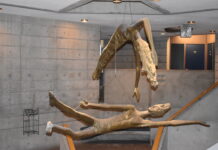The concept of antimatter was first proposed in 1928 by English physicist Paul Dirac with a theory that states every atom has an equal and opposite counterpart. With the discovery of antielectrons (or positrons) a few years later in 1932 by Carl D. Anderson, Dirac’s theory began to hold weight.
Physicists at CERN, the European Organization for Nuclear Research, have taken Dirac and Anderson’s work one step further, performing the first ever successful measurement of an antihydrogen atom. Using a laser, they were able to deduce the spectroscopic properties of the antihydrogen atom.
They found antihydrogen has the exact same properties as hydrogen, a fact they were expecting, as it lines up with Einstein’s theory of relativity.
One of the things that make antimatter experimentation such a meticulous process are its dangerous properties. When a matter and an antimatter particle of the same type come into contact, they annihilate each other, creating an explosion of energy.
However, on their website, CERN physicists have clarified the amount of energy their antimatter experiments produce are not dangerous, and would only be enough to “light a single electric light bulb for a few minutes”.
Another hurdle getting in the way of studying antimatter is its scarcity in the universe, as there is more matter than antimatter. This is why the universe exists, because if there were equal amounts of matter and antimatter in the universe, they would annihilate each other, thereby annihilating everything.
For this reason, the test was used on an antihydrogen atom, as hydrogen is the most abundant element.
For the scientific community, this new breakthrough in antimatter research is a bold new step.


































